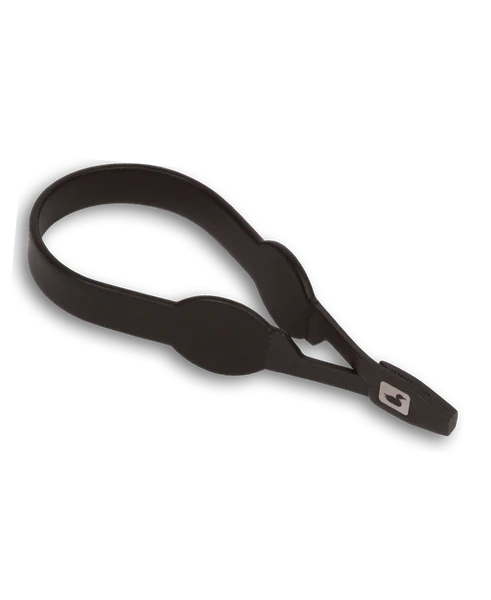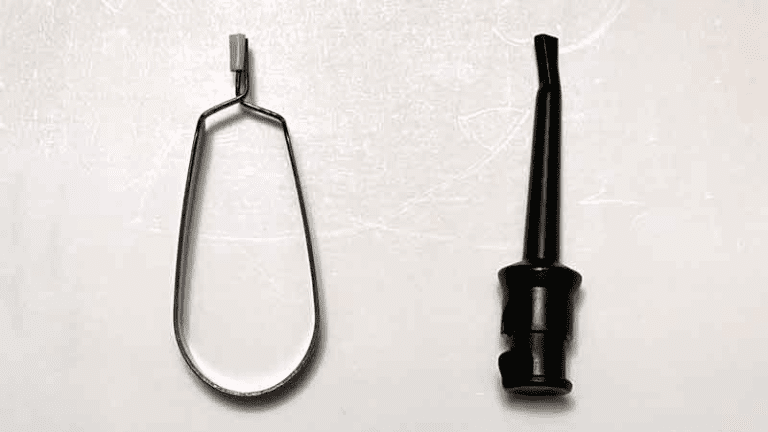If you’re an avid fly-tier, you’re likely familiar with hackle pliers. These seemingly simple tools are essential for handling hackles and other delicate materials during the fly-tying process. But there’s more to hackle pliers than meets the eye. For many fly-tiers, this tool is indispensable, acting as a “third hand” to control materials with precision and ease. In this article, we’ll explore the different types of hackle pliers, how they work, and what to look for when choosing the right pair for your tying needs.
What Are Hackle Pliers?

Hackle pliers are small, spring-loaded tools designed to grip hackles and other materials, allowing you to wrap them around a fly with ease. The tool’s simple mechanism enables you to hold feathers, yarn, tinsel, and other materials securely, providing control that would be difficult to achieve with just your fingers.
These tools are a staple in fly-tying kits because they offer several benefits:
- Precision and control during wrapping
- Secure grip on short or delicate feathers
- Freedom to work with both hands when necessary
How Hackle Pliers Work
At their core, hackle pliers consist of a set of spring-loaded jaws that grip the feather or material when pressure is released. By pinching the handles, you open the jaws, allowing you to position the material within them. When you release the handles, the spring mechanism closes the jaws around the material, holding it securely in place. This simple yet effective design provides the fly-tier with an extra “hand” for wrapping materials around hooks.
For Wrapping Hackles
The primary purpose of hackle pliers is to facilitate the process of hackling, which involves wrapping a feather around the shank of a hook. This technique is used to create wings, collars, and bodies on various types of flies. Hackle pliers help you grip the feather, giving you control over the angle and tightness of each wrap, ensuring that the hackle lies evenly on the fly.
For some feathers, such as short partridge or delicate hen feathers, hackle pliers are indispensable. These types of feathers have stems that are often too short or too fragile to grasp with your fingers alone. Additionally, the pliers add weight, allowing the feather to hang freely while you prepare to wrap or secure other materials.
Traits of High-Quality Hackle Pliers
Not all hackle pliers are created equal. A good pair of hackle pliers should:
- Grip Securely: They should hold the material firmly without slipping.
- Be Gentle on Materials: The jaws should lack sharp edges to avoid damaging delicate feathers or threads.
- Open and Close Easily: Look for pliers that are simple to operate, with a spring that offers just the right amount of tension.
- Provide a Comfortable Grip: Fly-tying can be a meticulous task, so you want pliers that fit comfortably in your hand.
- Be Lightweight but Sturdy: The best hackle pliers strike a balance between being light enough to handle easily and heavy enough to hold materials taut.
Types of Hackle Pliers
Over the years, fly-tying enthusiasts have developed several variations of hackle pliers, each with unique features designed to meet specific needs. Here are some common types:
1. Basic Clamp Pliers (English Style)
The simplest and most popular design, these pliers are made from a single piece of wire bent into spring-loaded jaws. They often have flattened tips to grip the hackle without causing damage. This style, sometimes referred to as English-style pliers, is a reliable choice for most fly-tying tasks.

2. Plate-Style Hackle Pliers
Plate-style pliers are crafted from flat metal plates rather than wire, offering a more comfortable grip. These pliers are slightly larger and may provide added stability, making them easier to handle for some tiers. Plate-style pliers are especially useful when working with heavier or bulkier materials.
3. Finger Loop Pliers
For added control, some hackle pliers come with small loops or rings where you can insert a finger. This design gives you greater dexterity and control during the wrapping process. By allowing your finger to act as an anchor, these pliers reduce the strain on your hand, making them ideal for longer tying sessions.
4. Tweezer or Nabber Pliers
These pliers resemble tweezers and feature flat, serrated jaws for extra grip. They are operated by a sliding sleeve that closes the jaws, which is useful for fine and delicate work. Nabber pliers are often favored for intricate tying tasks where a secure hold is essential.
5. Drop-Shaped Pliers

Drop-shaped hackle pliers have a unique design, with a teardrop shape that you press to open the jaws. This model is less common but offers an ergonomic grip and allows for a controlled, consistent wrap. The shape is designed to fit comfortably in your hand, providing excellent control over the feather.
Advanced Models and Specialty Designs
In addition to these basic types, you’ll find advanced models with added features, such as:
- Protective Springs or Rubber Pads: These features provide cushioning to prevent delicate materials from slipping or fraying.
- Shaft and Ring Attachments: Some pliers include rings or shafts for extra control. These features allow you to loop a finger through the ring or hold the shaft, keeping the tool stable as you work.
- Hook and Tube Pliers: This model has a hook that slides into a tube, allowing you to secure the material by retracting the hook or sliding the tube over it.
Choosing the Right Hackle Pliers for You
When selecting hackle pliers, consider the types of flies you typically tie and the materials you use. For most fly-tying tasks, a basic pair of English-style clamp pliers will do the job. However, if you frequently work with fragile materials, you might want to invest in a pair with rubber padding or a protective spring mechanism.

For those who tie larger flies, plate-style or finger loop pliers offer greater control and durability. On the other hand, if you specialize in intricate flies that require precise handling, tweezer-style pliers or hook-and-tube pliers could provide the added finesse you need.
Can You Tie Flies Without Hackle Pliers?
While hackle pliers are helpful, some seasoned fly-tiers prefer to work without them, especially for longer hackles. Using your fingers can give you a better sense of control and feel, allowing you to avoid accidentally snapping delicate feather stems. Ultimately, whether or not you use hackle pliers depends on your personal preference and tying style.
Conclusion: The Value of Hackle Pliers in Fly-Tying
Hackle pliers may be small, but they are mighty in the world of fly-tying. From simple designs to advanced models with specialized features, these tools offer flexibility, control, and precision. Choosing the right pair for your needs can make your tying experience smoother and more enjoyable. So next time you’re tying a fly, take a moment to appreciate the humble hackle pliers—they might just be the extra hand you need to bring your creations to life.